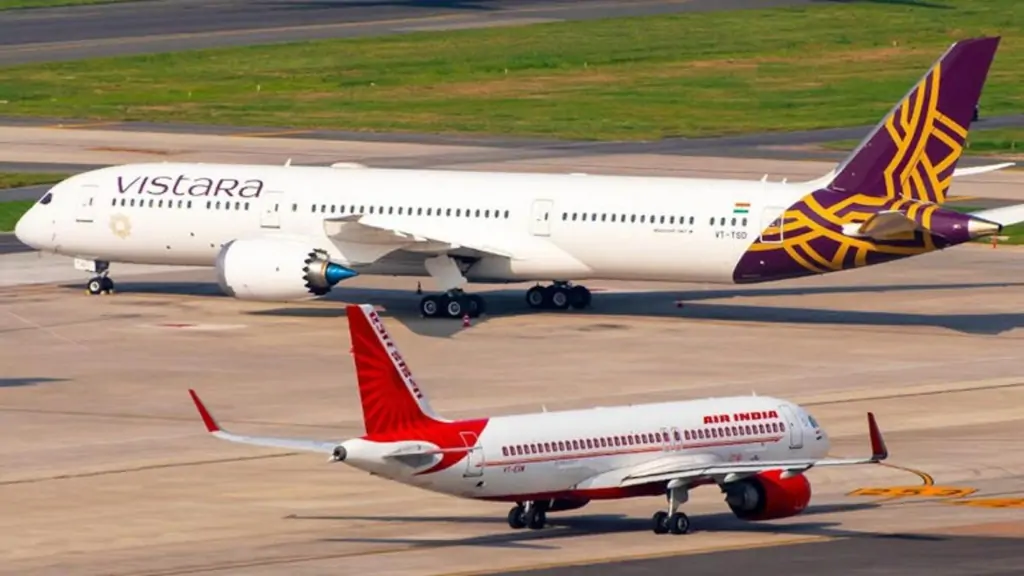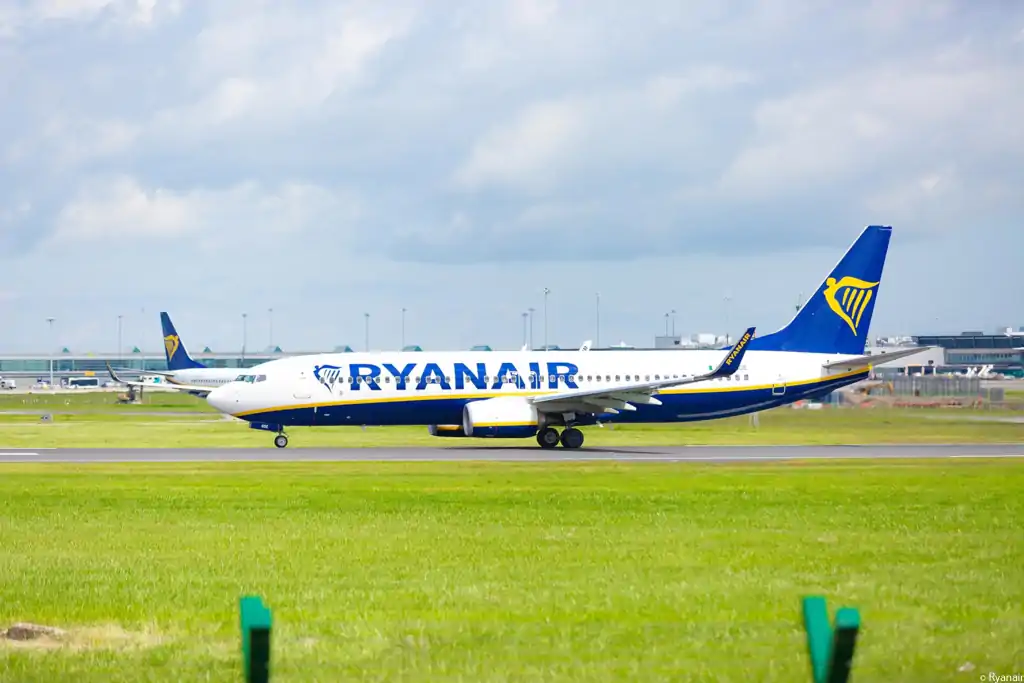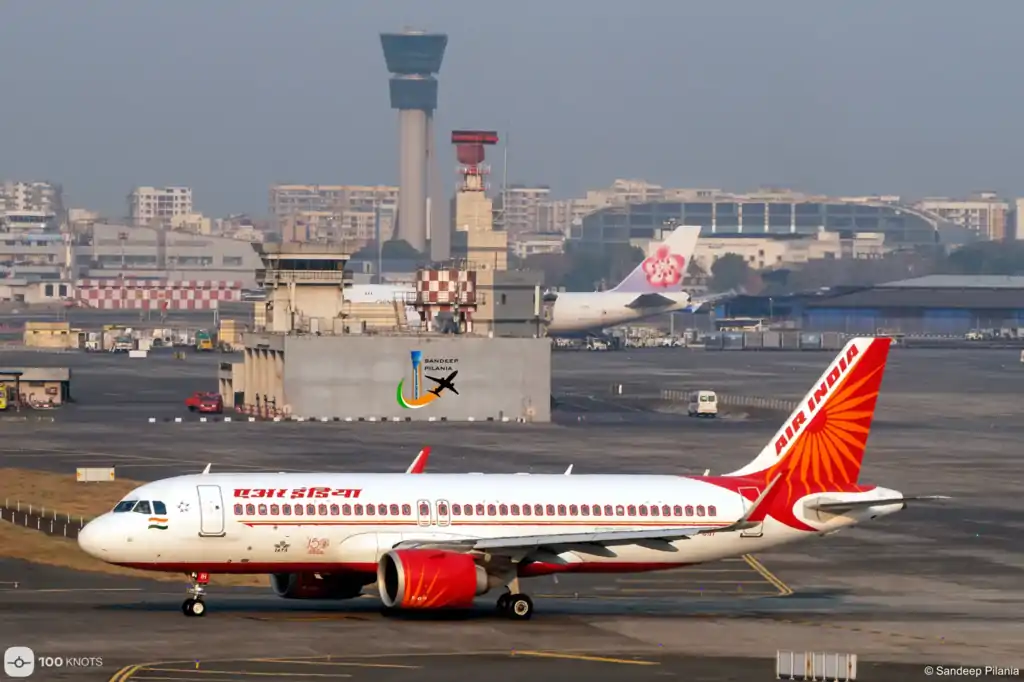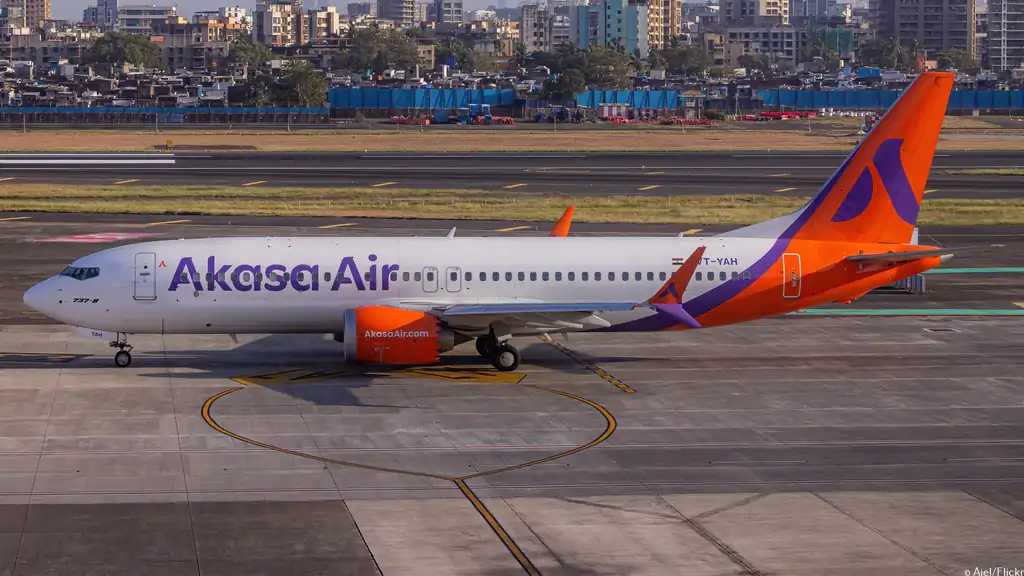European budget carrier Wizz Air is at a critical juncture as it embarks on selecting an engine manufacturer for 177 of its narrowbody Airbus jets on order. With the airline's current supplier, Pratt & Whitney, facing global issues, the decision between staying with Pratt & Whitney or switching to competitor CFM, a joint venture between General Electric (GE) and France's Safran, is complex. CEO Jozsef Varadi shared insights on this crucial decision during an interview at the CAPA India aviation summit in New Delhi.
The Current Engine Conundrum
Wizz Air operates an all-Airbus fleet and is significantly impacted by issues with Pratt & Whitney's geared turbofan (GTF) engines. The airline has grounded about 47 of its over 200 Airbus jets due to a powder metal issue with the GTF engines, with expectations of grounding an additional 30 planes by the next summer. This situation places immense pressure on Wizz Air to find a reliable engine partner for its future fleet.
Key Factors Influencing the Decision
Varadi outlined several critical factors that will influence Wizz Air's decision on the engine provider:
- Acquisition Cost: The initial cost of acquiring the engines will be a significant factor.
- Durability: The longevity and reliability of the engines are paramount, especially given the current issues with Pratt & Whitney.
- Operating Cost: Ongoing operational costs, including fuel efficiency and maintenance, will impact the airline's bottom line.
- Aftermarket Guarantees: Financial guarantees for maintenance and repairs post-purchase are essential to ensure cost predictability.
Tendering Process and Future Plans
"We are right now in the process of tendering it (the engine order)," Varadi stated, indicating that the decision-making process is actively underway. With 330 aircraft on order, half of which are confirmed to have GTF engines, the tender for the remaining 177 planes is crucial for the airline's future operations.
Varadi is confident that all ordered planes will be delivered by the end of the decade, projecting a fleet size of around 500 jets. However, for growth beyond this period, Wizz Air will need to place additional orders, with Varadi estimating the need for 70 to 100 new aircraft per year to replace aging jets and continue fleet expansion.
Strategic Implications
This engine selection not only affects Wizz Air's immediate operational capabilities but also its long-term strategic growth. The reliability and efficiency of the chosen engines will play a critical role in the airline's ability to maintain its budget-friendly operations while expanding its footprint across Europe and beyond.
Conclusion
Wizz Air's decision on its next engine provider is a pivotal moment for the airline. With Pratt & Whitney facing significant reliability issues, the choice to potentially switch to CFM engines involves balancing acquisition costs, durability, operating costs, and financial guarantees for maintenance. As Wizz Air looks to expand its fleet to 500 jets by the decade's end, this engine decision will shape the airline's future, influencing its operational efficiency and growth trajectory. The aviation industry will be watching closely as Wizz Air navigates this complex and consequential decision.
With Inputs from Reuters
Read next
The aviation industry is witnessing an exciting shift as Saudia Group, a state-owned conglomerate, prepares to enhance its fleet with wide-body jets. This strategic move comes as production slots for narrow-body aircraft face unprecedented constraints. With the group's recent narrow-body order falling short of its needs, the focus is now on acquiring larger aircraft to meet surging post-pandemic travel demands.
The Push for Wide-Body Jets
From Narrow to Wide: Saudia Group's Fleet Expansion
In a bid to bolster its fleet, Saudia Group, the parent company of Saudia Airlines and budget carrier Flyadeal, is in advanced discussions with aviation giants Airbus and Boeing. The group, which recently secured an order for 105 narrow-body Airbus planes, still faces a shortfall, having initially sought 180 units. This has necessitated a pivot towards wide-body jets such as the Boeing 787 and Airbus A330, according to Abdullah Alshahrani, General Manager of Communications and Media Affairs at Saudia Group.
Production Bottlenecks: A Catalyst for Change
The aviation industry is grappling with supply chain challenges, leading to significant delays in aircraft production. Airbus, for instance, has announced that it is fully booked for single-aisle jets until the decade's end. This production bottleneck, particularly for the popular A320, has prompted Saudia Group to consider wide-body jets as a viable alternative to maintain and expand its operational capacity.
Strategic Aviation Plans in Saudi Arabia
Investing in Aviation: Saudi Arabia's Vision
Saudi Arabia is channeling substantial investments to diversify its economy beyond fossil fuels, placing significant emphasis on aviation. The kingdom's ambitious plans include new airlines, extensive jet orders, and potentially a massive international airport, positioning it as a formidable competitor to the current Gulf travel hub, the UAE.
Engaging with Global and Emerging Players
Saudia Group's strategic vision also involves exploring partnerships with emerging aviation markets. The group plans to visit COMAC's facility in China this September to evaluate their jets, although immediate orders are not expected. This move signifies Saudi Arabia's interest in diversifying its aviation partnerships beyond the traditional dominance of Airbus and Boeing.
Expanding Horizons: Destination Growth and Partnerships
Increasing Global Reach: More Destinations and New Planes
Currently flying to 100 destinations, Saudia Group aims to expand its reach to 150 destinations by the end of the decade. This ambitious goal is set to be fueled by the addition of 200 new planes, including the long-range Airbus A321XLRs, allowing the airline to tap into new markets and enhance connectivity.
Strengthening Ties with India
India represents a crucial growth market for Saudia Group. The airline is committed to regaining market share through more direct flights, new destinations, and improved cabin services. Last year, Saudi Arabia welcomed 1.5 million visitors from India, a number that the group aims to quintuple to 7.5 million by the end of the decade.
In a significant development, Saudia Group recently held talks with Air India to explore various partnership opportunities, including a potential codeshare agreement. "We want to work with Indian carriers closely on any type of cooperation to increase and offer good options to the Indian and Saudi passengers," Alshahrani noted.
Conclusion
Saudia Group's proactive approach to fleet expansion and strategic partnerships underscores its commitment to becoming a major player in the global aviation market. As it navigates the challenges of aircraft production constraints and leverages opportunities in emerging markets, the group's vision is set to propel it towards a future of unprecedented growth and connectivity.
With Inputs from Reuters
Read next
Ryanair, Europe's largest budget airline, faced a significant legal defeat on Thursday as it lost a high-stakes court battle against a 10-billion euro ($11 billion) Spanish solvency scheme. This scheme, approved by EU competition authorities four years ago, aimed to support pandemic-hit companies. The Luxembourg-based Court of Justice of the European Union (CJEU) dismissed Ryanair's appeal, marking another chapter in the airline's series of legal challenges against state aid provided to its competitors during the COVID-19 pandemic.
Background of the Legal Battle
The Spanish Solvency Scheme
In 2020, the European Commission approved a Spanish government initiative to create a solvency support fund for strategic Spanish undertakings affected by the pandemic. This decision was part of a broader EU effort to stabilize various sectors, including airlines, severely impacted by COVID-19. The scheme aimed to ensure that critical businesses could weather the financial storm brought on by the pandemic, maintaining their solvency and safeguarding jobs.
Ryanair’s Legal Challenge
Ryanair, known for its aggressive stance against state aid to competitors, quickly challenged the Spanish scheme. The airline argued that such aid distorted competition within the EU's single market. Initially, Ryanair's challenge was dismissed by a lower tribunal, prompting the company to appeal to the CJEU, Europe's highest court.
The Court’s Ruling
Dismissal of Ryanair’s Appeal
In a decisive ruling, the CJEU judges upheld the European Commission's approval of the Spanish solvency support fund. The court concluded that the aid scheme's objectives justified its implementation, despite its potential adverse effects on the internal market. The judgment emphasized the exceptional nature of the COVID-19 crisis and the necessity of such measures to maintain economic stability within the EU.
"The Court upholds the (European) Commission's decision authorizing the solvency support fund for strategic Spanish undertakings," the Court stated. "The exceptional nature and the particular weight of the objectives pursued by that aid scheme permit the inference that a fair balance was struck between its beneficial effects and its adverse effects on the internal market, with the result that it is in the common interest of the European Union."
Ryanair’s Response and Broader Implications
Ryanair’s Reaction
Following the ruling, Ryanair expressed disappointment but also highlighted the broader issue of state aid recovery. The airline pointed out that despite similar cases where the EU General Court found state aid to airlines like Air France, KLM, Lufthansa, SAS, and certain Italian carriers to be unlawful, the European Commission has not yet ordered the recovery of these funds.
"In other cases, concerning Covid-19 state aid, the EU General Court ruled that billions of euros in aid received by Air France, KLM, Lufthansa, SAS, and certain Italian airlines were unlawful," Ryanair said in an email. "The European Commission has still not ordered recovery of the unlawful aid, nor has it imposed any measures to remedy the damage to competition caused by the French, Dutch, German, Swedish, Danish, and Italian governments favoring their legacy flag carrier airlines over other EU airlines, in breach of EU law."
Future Legal Battles
The judgment in case C-441/21 P | Ryanair v Commission is final and cannot be appealed, signaling the end of this particular legal avenue for Ryanair. However, the airline has won and lost various other challenges regarding state aid, indicating that its legal battles are far from over. Ryanair's persistent legal efforts highlight the ongoing tension between state aid policies and competition laws within the EU.
Conclusion
The CJEU's dismissal of Ryanair's challenge against the Spanish solvency scheme marks a significant moment in the ongoing debate over state aid in the EU. While Ryanair has faced a setback in this instance, its broader campaign against what it sees as unfair state support for competitors continues to shape the landscape of European aviation. As the industry recovers from the pandemic, the balance between supporting strategic businesses and maintaining fair competition remains a contentious issue.
With Inputs from Reuters
Read next
Vistara and Air India Set to Soar Together: A Landmark Merger in Indian Aviation
Abhishek Nayar
08 Jun 2024

In a significant move poised to reshape the landscape of Indian aviation, the National Company Law Tribunal (NCLT) has greenlit the merger of full-service carrier Vistara with its larger rival, Air India. This pivotal decision marks a substantial step towards the consolidation of the two Tata Group airlines, bringing a fresh wave of anticipation and strategic realignment in the industry.
The Genesis of the Merger
Announcement and Approvals
The merger was initially announced in November 2022, envisioning the absorption of Vistara—49% owned by Singapore Airlines—into Air India. With the approval from the NCLT, this merger will grant Singapore Airlines a 25.1% stake in the unified entity, reflecting the multinational nature and strategic depth of this deal. This move has received the nod from both Indian and Singaporean antitrust regulators, underscoring its compliance with competitive standards.
Timeline for Completion
According to the NCLT's order dated June 6, Air India must finalize the merger within nine months, targeting a completion by the end of the year. Air India CEO Campbell Wilson reaffirmed this timeline earlier this week, signaling a new era of operations and market dynamics.
Strategic Implications of the Merger
Strengthening Market Position
The merger is expected to significantly bolster Air India’s position in the aviation market, combining Vistara’s premium service with Air India’s extensive network. The merged entity will benefit from enhanced operational synergies, streamlined services, and a unified brand presence, thereby offering a more competitive edge against local and international rivals.
Fleet Expansion Plans
In tandem with the merger, the Air India group—which also includes low-cost carriers Air India Express and AirAsia India—has placed an ambitious order for 470 jets from aviation giants Airbus and Boeing. This massive fleet expansion aims to enhance Air India's capability to compete with dominant players like IndiGo and Middle Eastern airlines that have a strong foothold in outbound traffic from India.
Impacts on Stakeholders
Shareholders and Employees
The "Composite Scheme of Arrangement" sanctioned by the NCLT promises significant benefits for the stakeholders of both airlines. Shareholders stand to gain from the enhanced market value and operational efficiencies, while employees can look forward to better resources and growth opportunities within the merged entity.
Passengers
For passengers, the merger is anticipated to deliver a superior flying experience, combining Vistara’s reputation for service excellence with Air India’s extensive route network. The unified carrier is likely to offer improved connectivity, more flight options, and potentially more competitive pricing, enhancing overall customer satisfaction.
Industry Outlook
Competitive Landscape
With the merger, Air India aims to reclaim its stature as a premier global carrier, countering the dominance of IndiGo in the domestic market and Middle Eastern carriers on international routes. The expanded fleet and enhanced service capabilities will be crucial in attracting and retaining a broader customer base.
Future Prospects
The consolidation within the Tata Group's aviation assets signals a strategic alignment aimed at creating a robust and resilient airline capable of withstanding market fluctuations and competitive pressures. The successful integration of Vistara into Air India will set a precedent for future mergers and acquisitions in the industry, potentially leading to further consolidation and collaboration.
Conclusion
The merger of Vistara with Air India marks a transformative milestone in Indian aviation. As the two carriers prepare to soar together, the aviation industry and its stakeholders watch with bated breath, anticipating the new heights that the combined entity will achieve. This landmark deal not only promises enhanced value for shareholders and a superior experience for passengers but also sets the stage for a dynamic and competitive future in the skies.
With Inputs from Reuters
Read next
Despite the soaring demand in the world's fastest-growing aviation market, Indian airlines are bracing for a challenging fiscal year 2025. According to CAPA India, a top aviation consultancy, the industry is expected to post a significant loss of between $400 million to $600 million, surpassing the previous year's loss of $300 million to $400 million. This anticipated downturn comes even as market leader IndiGo recorded a profit in the last fiscal year.
Rising Costs Amid High Demand
Increasing Operational Costs
CAPA India projects that overall airline costs will rise by 3.8% in fiscal 2025. The consultancy did not specify the cost increase for the previous year, but the current forecast suggests that escalating operational expenses are a major concern for the industry. These costs encompass fuel prices, maintenance, labor, and airport fees, which collectively threaten to erode profit margins despite the booming demand.
Supply Crunch and High Fares
India's aviation sector has been grappling with a supply crunch, where the demand for flights surpasses the available planes. This imbalance has allowed airlines to charge higher fares, leading to record yields. CAPA India predicts this trend of high yields—defined as the average amount paid by a passenger to fly one kilometer—to continue in the short term, with an expected rise of approximately 1% for fiscal 2025. Passenger load factors (PLF), a measure of how full flights are, are also expected to remain high at 85%.
Fleet Expansion and Market Dynamics
Addition of New Aircraft
To alleviate the supply crunch, Indian airlines are set to add 84 aircraft to their fleet in the current year, increasing the total number of planes to 812 from 728 as of March. This expansion is part of a broader trend, with airlines planning to more than double their fleet size by 2030. The anticipated fleet growth is driven by massive orders placed with Airbus and Boeing, signaling long-term confidence in market growth.
Dominance of Key Players
India's aviation market is predominantly controlled by low-cost carrier IndiGo, which commands a 60% market share. The Air India group, comprising two budget carriers and two full-service carriers (Air India and Vistara), holds around 30% of the market. Together, these major players have over a thousand aircraft on order, positioning themselves for significant future growth.
Passenger Traffic Growth
Domestic and International Expansion
CAPA India estimates domestic passenger traffic to increase to 161 million to 164 million, up from approximately 154 million. International traffic is also expected to grow, reaching 75 million to 78 million. This expansion reflects the robust demand for air travel within and outside India, driven by a growing middle class and increasing economic activity.
Conclusion: Navigating Through Turbulence
While Indian airlines are poised for growth with rising passenger traffic and expanding fleets, the industry faces significant challenges due to increasing operational costs. The balance between managing these costs and capitalizing on the high demand will be crucial for the financial health of airlines. As the industry navigates through this turbulent phase, strategic planning and efficient cost management will be key to sustaining profitability in the rapidly evolving Indian aviation market.
With Inputs from Reuters
Read next
In a significant move that underscores its ambitious growth plans, Akasa Air, India's newest airline, is set to receive deliveries of Boeing's 737 MAX 10 planes by the summer of 2027. The announcement, made by Akasa's CEO Vinay Dube, aligns with the airline's strategy to expand its international footprint, having commenced international flights in March.
Strategic Fleet Expansion with Boeing Orders
Earlier this year, Akasa Air placed a substantial order for 150 Boeing 737 MAX narrow-body planes, including both MAX 10 and MAX 8-200 versions. While the exact split between the two models was not disclosed, this acquisition is a clear indicator of Akasa's commitment to expanding its operational capacity and enhancing its service offerings. The new fleet is expected to significantly bolster the airline's ability to compete in both domestic and international markets.
Navigating Certification Challenges
The journey to integrating the 737 MAX 10 into Akasa's fleet is not without its challenges. The U.S. Federal Aviation Administration (FAA) raised concerns about the model's certification following an incident in January involving a 737 MAX 9. Despite these hurdles, Akasa remains optimistic, banking on Boeing's assurances and the expected certification of the MAX 10 by 2027. This confidence contrasts with sentiments from other airlines like Delta Air Lines and United Airlines, which have expressed reservations and even adjusted their orders in light of the delays.
Rising Market Share in a Competitive Landscape
Despite being a relatively new player in the Indian aviation market, Akasa Air has shown impressive growth. As of the March-quarter, the airline captured a 4.5% market share, up from 3% a year earlier. While still trailing behind major competitors like IndiGo, SpiceJet, Vistara, and Air India, this increase reflects Akasa's growing presence and customer base in the industry.
Current Fleet and Operational Focus
Currently, Akasa Air operates a fleet of 24 aircraft, all of which are Boeing 737 MAX planes. This uniform fleet strategy allows for operational efficiencies and streamlined maintenance processes, positioning Akasa well to scale up as new aircraft are integrated into its lineup.
Looking Ahead: Akasa's Vision for 2027 and Beyond
With the anticipated arrival of the 737 MAX 10, Akasa Air is gearing up for a new phase of growth. The larger, more efficient MAX 10 will enable the airline to offer more routes and frequencies, particularly on international sectors where demand is rising. This strategic expansion aligns with Akasa's broader vision of becoming a key player in the global aviation market.
Conclusion: A Bright Horizon for Akasa Air
As Akasa Air awaits the delivery of its new Boeing 737 MAX 10 planes, the airline's future looks promising. With a growing market share, a robust fleet expansion plan, and a clear focus on international growth, Akasa Air is well on its way to establishing itself as a significant force in the aviation industry. The coming years will be crucial as the airline navigates regulatory challenges and continues to build on its early successes.
With Inputs from Reuters






Comment